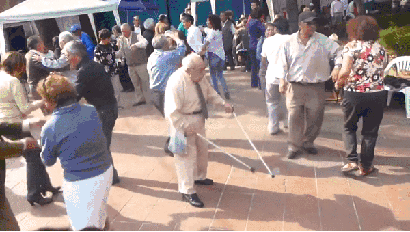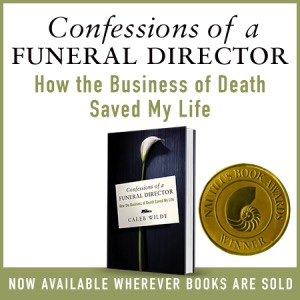Aggregate Death
The Rainbow Bridge: A Poem for Pet Loss
By the edge of a woods, at the foot of a hill,
Is a lush, green meadow where time stands still.
Where the friends of man and woman do run,
When their time on earth is over and done.
For here, between this world and the next,
Is a place where each beloved creature finds rest.
On this golden land, they wait and they play,
Till the Rainbow Bridge they cross over one day.
No more do they suffer, in pain or in sadness,
For here they are whole, their lives filled with gladness.
Their limbs are restored, their health renewed,
Their bodies have healed, with strength imbued.
They romp through the grass, without even a care,
Until one day they start, and sniff at the air.
All ears prick forward, eyes dart front and back,
Then all of a sudden, one breaks from the pack.
For just at that instant, their eyes have met;
Together again, both person and pet.
So they run to each other, these friends from long past,
The time of their parting is over at last.
The sadness they felt while they were apart,
Has turned into joy once more in each heart.
They embrace with a love that will last forever,
And then, side-by-side, they cross over… together.
— Steve and Diane Bodofsky —
It Was a Normal Death Call Until The Family Tackled Me
The following post was submitted by a funeral director who wishes to remain anonymous. While the names have been changed to protect the privacy of the parties involved, the circumstances and events that you are about to read are entirely true.
*****
Jane Doe had been a prominent and well-known local politician. She had been on hospice for a short time. Upon arriving at Jane’s, typical suburban house, at the end of the culda sac, I counted about 15 cars parked around her house. I couldn’t help but think, “Wow! Jane was very well loved, and there are a lot of cars here for 2am.
Upon ringing the door bell, I was greeted by John, her husband of 30 years. He couldn’t help but apologize for “waking us up at such an ungodly hour”. After speaking with John, and asking if he was ready for us, he replied, “Yes” and invited us inside. Internally I thought this will be straight shot, piece of cake pickup.
What I failed to gather was the mood of the people in the house … the quiet before the storm. Jane had been in the living room. Me and my partner gather our required equipment, and made the 50 foot journey to the living room. I began my speech, “if you would to stay and watch and help, you’re more than welcome too. Please do not feel as if you have to leave the room.” No one wanted to help us move Jane, but they all decided to stay and watch.
Upon getting Jane onto the stretcher, I was entirely unaware of the mass hysteria about to unfold in front of my eyes. After I moved Jane onto the stretcher, I began to tighten the strap when Jane’s body, due to the force of me strapping her in, belched.
Mass hysteria erupted. I was literally tackled away from the stretcher, 911 was called, and the teary eyed people now became violent, as to them I was taking their very much ALIVE loved one who had not died. I was sat upon, as the police and ambulance were on their way. What was probably only 3 minutes seemed like an eternity and I could only think of one thing, “where is this hospice nurse?!”
Upon the authorities’ arrival, I was able to explain my predicament. And that the belching that had occurred was a natural and actually fairly common phenomena for the dead. The police officer, fireman, and ambulance driver cracked a knowing smile and helped me restore the peace as I took Jane into my care.
They even escorted us to the funeral home. John, upon seeing me the next afternoon to make arrangements, immediately burst into laughter, saying, “Sorry about last night, my family loved her very dearly.” My only response was to politely say “I would have done the same thing had I not known better.”
Seven Funerals of the Famous (and their cost)
This is how I want to die …
The Suicide Forest in Japan
Emulation suicide (or “copycat suicide”) is a real thing. Often times a suicide in a popular novel, in a popular movie, a celebrity suicide or a suicidal song will spark what’s called “suicide contagion”, otherwise known as the Werther effect, which sets off a sting of related suicides.
The Werther effect occurs in different settings. Sometimes, you’ll see it play out in schools, where a number of kids will take their lives in a certain period of time. You’ll see it happen in families, where each consecutive generation experiences suicide to some level. Movements, like the Tunisian Revolution was set off by the protest suicide of Mohamed Bouazizi. And you’ll see it happen in specific places, such as Aokigahara, otherwise known in Japan as the “Suicide Forest”.
This from Wikipedia:
The forest is a popular place for suicides, reportedly the most popular in Japan. Statistics vary, but what is documented is that during the period leading up to 1988, about 100 suicides occurred there every year.[5]
In 2003, 105 bodies were found in the forest, exceeding the previous record of 78 in 2002.[6] In recent years, the local government has stopped publicizing the numbers in an attempt to downplay Aokigahara’s association with suicide.[7] As of 2011, the most common means of suicide in the forest were hanging and drug overdoses.[9]
The high rate of suicide has led officials to place signs in the forest, in Japanese and English, urging suicidal visitors to seek help and not kill themselves. Annual body searches have been conducted by police, volunteers, and attendant journalists since 1970.[10][11][12]
The site’s popularity has been attributed to the 1960 novel Kuroi Jukai (Black Sea of Trees) by Seichō Matsumoto.[13] However, the history of suicide in Aokigahara predates the novel’s publication, and the place has long been associated with death: ubasute may have been practiced there into the nineteenth century, and the forest is reputedly haunted by the Yūrei (angry spirits) of those left to die.[7]

A noose made from neckties hangs from a tree in Aokigahara Jukai in Yamanashi Prefecture, Japan on 26 March, 2009. Hanging and drug overdoses are the most common methods chosen by those taking their lives in the forest.









